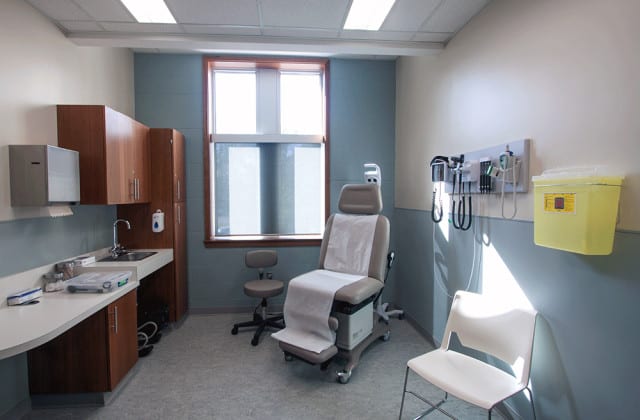
The College of Medicine will mandate an increase of over 200 new clinician-teachers who will allot no more than 20 per cent of their time to academic work.
On Sept. 4, the College of Medicine released its plan to restructure the college and address accreditation issues.
For the past 18 months, the College of Medicine has been developing a renewal plan after receiving a warning of probation from the Liaison Committee on Medical Education from the Committee on Accreditation of Canadian Medical Schools.
The College of Medicine was warned that if it did not resolve a number of issues surrounding its undergraduate program, it was in danger of losing its accreditation as a medical school. The University of Saskatchewan’s College of Medicine would be the first Canadian medical school to be put on probation twice if the issues remain unresolved.
The renewal plan, titled The Way Forward, was developed by the Dean’s Advisory Committee. The DAC was created in August 2012 to assist in the detailed implementation of the renewal plan.
The plan states “the College of Medicine has failed to keep pace with the changing landscape of medical education and research.” It also stated that “a fundamental realignment of the time and resources dedicated to teaching, research, and clinical service is necessary.”
The report identifies three primary objectives that address issues of critical importance to the College of Medicine: to realign faculty complement, re-conceptualize research and restructure college governance and partnerships.
Because the college’s faculty can derive a significant amount of income from clinical service, there is an imbalance within the college that favours service delivery over academic work. The DAC estimates that the majority of the College of Medicine faculty spend less than 20 per cent of their professional time on academic work despite receiving a full-time academic salary from the university.
The imbalance between clinical service and academic work has had a significant effect on the college’s undergraduate program. In 2011 and 2012, U of S students ranked last on the Medical Council of Canada Qualifying Exam, which is a standardized test given to all medical school graduates in Canada.
To rectify these problems, the DAC recommended increasing the number of clinician-teachers from 107 to a minimum of 350. Clinician-teachers are faculty members that teach but focus primarily on delivering clinical service.
The renewal plan mandates that clinician-teachers will dedicate a maximum of 20 per cent of their professional time to academic work. However, by increasing the number of available clinician-teachers, the college hopes to fulfill its commitment to undergraduate education.
The reconceptualized research objective focuses on increasing the productivity of medical research at the U of S. Currently, the U of S lags behind the other U15 universities — the top 15 research-intensive universities in Canada — in terms of research productivity.
To heighten its research profile, the DAC recommended that the College of Medicine recruit established medical clinicians and scientists in greater numbers. Additionally, the college will place greater emphasis on fostering internal research talent.
Currently, the U of S ranks 16th out of Canada’s 17 medical schools in research funding. Over the next four years, the College of Medicine will look to double external funding by diversifying its range of sources.
The final objective focuses on college governance and external partnerships. A report by Acting-Dean of Medicine Lou Qualtiere and Vice-Provost College of Medicine Organizational Restructuring Martin Phillipson asserted that the college operates on an outdated governance structure. The December 2012 report suggested that the current structure relies too heavily on the dean.
As a result, the college has created three vice-dean positions, each of which will be dedicated to a specific area of interest. The three areas are research, education and faculty engagement.
As of June 1, interim vice-deans had been appointed to all three positions.
The creation of three vice-deans will allow each to focus on the administration of their specific area. Specialized vice-deans are a common feature of the majority of Canadian medical schools.
Another major change to the College of Medicine’s governance structure affects the division of biomedical sciences. Currently, the division is divided into five separate departments: anatomy and cell biology, biochemistry, microbiology and immunology, pharmacology and physiology.
Under the new governance model, these departments will be combined into either one or two academic units. The college has not finalized its decision on this issue.
A final recommendation made by the DAC was to strengthen the relationship between the College of Medicine and its partners such as the provincial government and regional health authorities.
To accomplish this, the college will create a permanent advisory council similar to the DAC. The advisory council will serve as a forum between the college and its partners throughout the province.
Feedback on the renewal plan will be collected between Sept. 4 and Oct. 9. Town Hall meetings are scheduled for Sept. 10, Sept. 23 and Oct. 2. The finalized plan will be presented to University Council on Oct. 24.
—
Photo: Jordan Dumba